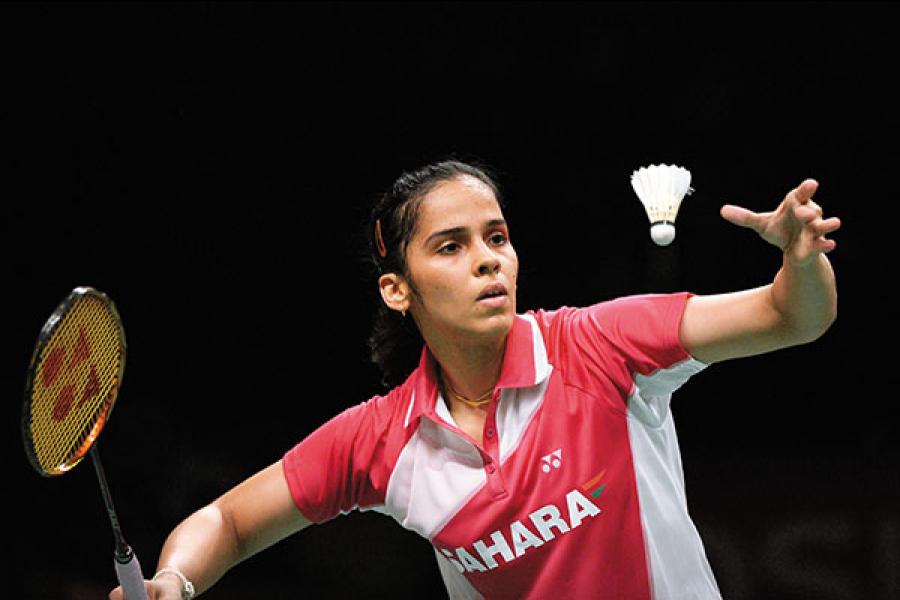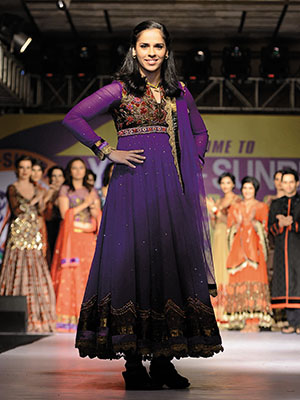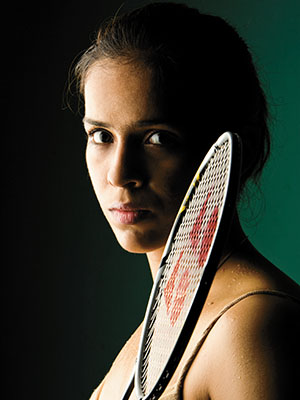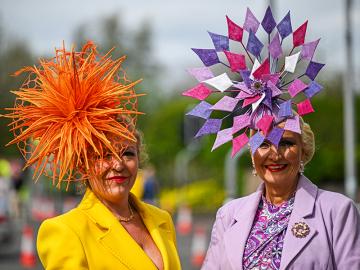
Saina Nehwal: The Girl and the Game
Arguably India’s most prominent non-cricket sportsperson, Saina Nehwal’s rise has created a new generation of badminton lovers in the country
When Saina Nehwal first burst onto the scene as a 16-year-old in 2006, Sania Mirza was at the height of her pomp: The irreverent messages on her t-shirts as well as the spunk in her attitude made the tennis player a hit with the Indian youth. Mirza had just been named the WTA Newcomer of the Year (2005) too.
The presence of two similarly named champions often caused confusion in newspaper offices. Saina… Sania… Saina… Sania: It was an easy mistake to make when writing a piece on the newbie, particularly in a rush to meet the deadline. Two letters changing positions, you just could not notice the difference. Not surprisingly, Saina would, more often than not, be the afflicted party. The following day, the error would be blamed on typoglycemia (a situation where as long as all the necessary lettersare present, and the first and last letters remain the same, readers appear to have little trouble reading the text). The editors were no less mad but at least this was a handy excuse.
Seven years on, such mistakes are fewer and far between. Reason: Imagine an India without cricket and Saina, 23, would be the country’s most famous sportsperson. You cannot discount Viswanathan Anand, Leander Paes and a host of Olympic stars but badminton has emerged as India’s second most popular sport thanks to the efforts of Saina, PV Sindhu, Paruppali Kashyap and Pullela Gopichand; it is the sport that is getting the media coverage and in which India is challenging the world.
Keeping it simple
Saina’s rise has been anything but instant. She has been around for a good eight years. But do we know her like we know, say, Mahendra Singh Dhoni? Ask the layman about the Indian cricket captain and he will quickly rattle off facts about his hair, his bikes, his cars, his wife, his captaincy, his food habits, his endorsements and even his ragging of Sir Ravindra Jadeja. Ask him about Saina and he will probably have two references to make—badminton and Gopichand. Press a little more and you might get him to talk about her much-documented penchant for aloo parathas too.
“I am a very simple person. I believe in actions and the truth,” says Saina in an email interview. “My childhood was spent in Hisar and my teenage years were spent playing badminton in Hyderabad. I did not get a chance to make friends because of this shift [of locations].”
Saina’s simplicity is humbling but the intensity of her focus can be unnerving too. “My parents initially wanted me to focus on studies but God wanted me to become a badminton player. One day in Hyderabad, [SM] Arif sir [a Dronacharya Award winner] recognised me as a player and I became one. Since 1999, badminton has been my only focus. Nothing else,” she says. “They talk about the aloo parathas but I can’t have too many of them as I gain weight. They are a luxury. When I am home, movies… particularly those of Shah Rukh Khan’s… are generally on my plate. I do not like shopping so my sister and mother do it for me.”
So much about Saina is badminton that you wonder if she has time to do anything else. This has been her routine for almost every morning since 1999: Exercise, do the rounds and practise her groundwork. Make no mistake, she enjoys what she does—spending six days a week on the courts, leaving nothing in the tank. And this is only possible because she loves winning the most.
“Sundays are the only free days. On the remaining six days we are busy with training on the badminton courts for at least six to seven hours per day. I don’t mind it. I want to be the best,” she says. “Intelligence with grit is the key to winning a tournament. One has to be stubborn to fight for the honour of the country; one must give 100 percent to win in any match. Some people have this attitude more compared to others. It is natural.”
Changing the game
There are at least three distinct phases in modern Indian badminton—the Prakash Padukone era, Gopichand’s All England triumph, and the age of Saina.
Padukone had ensured that badminton to India was not relegated to what we saw Jeetendra ‘play’ in the movies. “Indians love badminton—there has been a following (for the game) ever since Prakash Padukone won the World Cup in the ’80s,” says adman Prahlad Kakkar. “He had it all; he was tall, good-looking, fair and a winner, all the things that this country loves. He could have been the Pataudi of badminton. But he chose to avoid all of that and concentrate solely on the game. Sometimes I wish he hadn’t.”
It took a long time for India to find its next badminton star. Waiting in the wings was Gopichand who had to figure things out for himself: He had no mentor. His biggest challenge was to break the stronghold of the dominant Chinese. When he eventually did that, winning the All England in 2001, it was the high point of his career, making him a household name. Then, a knee injury knocked him out of the sport.
India needed a new champion. Welcome, Saina.
“Badminton was gaining momentum after Gopi sir won the All England. And I came in after Aparna [Popat]. I was defeated three times in a row by her in the finals of the All India championship [2004, 2005 and 2006]. But I beat her in the Indian Satellite in 2005,” says Saina. “It gave me the confidence that I could win at the international level too. I started winning a few international tournaments and things kind of just fit in. My wins were the first of their kind in India, so badminton got the momentum to reach greater heights.”
China, though, continues to be a problem for India. They had blocked Gopichand’s path, now they stall Saina too. What explains their domination? “In China, there are more academies and trained coaches in badminton as compared to India. They give full financial support to their players. They have at least eight players ready for each category compared to India where we have one, may be two,” says Saina. “Their natural build and nutrition is different from ours. In India, popularising the sport at the grass-root level is the key to our rise. We need an assembly line to compete with China.”
And that is where a bigger brand Saina can help. For long, every cricketer wanted to be Sachin Tendulkar. Now, we need a nation of badminton players looking to emulate Saina—winning medals at the Olympics and succeeding at the Super Series.
In every way, Saina’s brand is good for badminton’s brand.
Brand Saina
Despite the hype surrounding her, Saina is still not on television screens as often as the cricketers. Simply put, Dhoni and Kohli are easier to sell than someone whose life outside badminton is limited to her love of aloo parathas. Does this bother her?
“Ads are earned by the players. No one interferes with anybody’s share. It [cricket] is a game for the masses, so the response goes to cricketers and they take a major share of ads,” she says. “The corporate houses go with them to popularise their brand name. It is only fair. But now they have some love for me and have kept me on an equal footing with cricketers.”
Her Twitter profile (240 tweets, 182,299 followers) or her Facebook page (2,308,558 likes): Are these numbers that matter to her in the building of her brand? “No, I am simply Saina. I want to do well in my sport. Let the people of India decide about my brand. If they like me, I will be happy,” said Saina.
Aparna Popat, former world No. 16 and one of India’s finest badminton players, has seen the sport morph from a niche discipline to one that is followed by the masses today. And she feels that Saina has played a big role in that transition. But why is Saina’s brand not as big as her impact? “Maybe badminton players are boring because that is how our mental make-up is. If you step back a generation, how many characters would you find in badminton? If you do the same for tennis, F1 or even cricket—you will find plenty of such instances,” says Popat. “My coach, for example, didn’t even let me read comic books when I was growing up because he thought that the small print may affect my eyes.”
In fact, she puts forth another view that might seem odd, even archaic, today. “There is already talk in the badminton circles that the advertisements Saina does are too many,” says Popat. “They say that she has a BMW and too much money and that is affecting her play. So in that sense, it is a double-edged sword. How much is too much?”
Kakkar believes that the most important thing for Saina at the moment is to keep winning. The rest will fall in place. “She just needs to keep winning. It doesn’t matter what you do in terms of a brand building exercise if your performance on the field dips,” says Kakkar. “India is not yet obsessed about badminton, certainly not in the way it is about cricket. So if you lose, you drop out of sight, and that’s not good.”
Saina has not had the best year, having failed to win a tournament in 2013. Her progress has been hampered by injury. That meant a time out, no practice and given that Saina’s game is all about fitness, these breaks hit her hard. That is also the crucial difference between cricket and an individual sport like badminton.
“Cricket is a team sport. There is pressure on you but it’s not all on you, not all the time. If the team wins, you still win. You have a chance to fail but you also have several chances to shine. In an individual sport like badminton, it’s all you. You are there in the middle alone, with the spotlight on you,” says Popat. “You might argue that even tennis players do the same, but look at how they travel—they have their family, coach, trainer, a personal space. In badminton, you go away for a five-day tournament. It is intense and then you come back to training, over and over again. If you party too hard, you can’t give your best the next morning.”
In sport, you are constantly judged by the present. No matter what you have achieved in the past, what promise you hold, if you can’t win on the day, you don’t matter. 2014 will give Saina a chance to matter even more. The Commonwealth Games at Glasgow in July are quickly followed by the Asian Games at Incheon in September. With the eyes of India on her, she will have a chance to go for gold once again.
If she can do that then the headlines will all read: Saina.. Saina… Saina… Saina… there will be no room for a mistake.
(This story appears in the 27 December, 2013 issue of Forbes India. To visit our Archives, click here.)
-
 Sia
Siafabulous, awesome, amazing, superb!!!!!!!!!!!!!!!!!!!!!!!!!
on Feb 8, 2015 -
 Amlandeep Bhattacharya
Amlandeep BhattacharyaSaina is a real champ. She may be a little out of form but considering the right kind of killer instinct and skill she posses she surely will be back to the top with a gusto. And the media must play a mature role to maintain the rivalry between Saina and Sindhu a healthy one. After all both are the true flag-bearers of Indian ladies badminton and champions should not fight among themselves. Saina you are a true champ and deserves to be among the best. Don\'t be disheartened as we the sports lovers are with you and are always going to support you in your hard times. Remember Saina the old proverb that THIS TOO SHALL PASS and once again you will be on the highest podium. ALL THE BEST Saina, you rock . Atta girl, way to go.
on Dec 19, 2013 -
 Krish Mohan
Krish MohanAshish, it's Parupalli Kashyap not Paruppali. Hope u correct this
on Dec 17, 2013

















